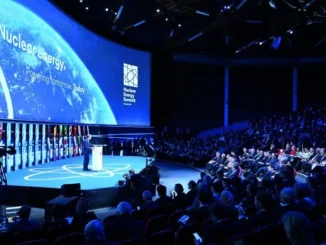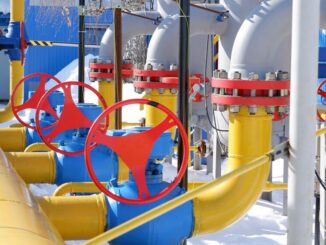
Italian energy giant Eni S.p.A. (ENI) reported a significant 25% decline in its adjusted net profit for the second quarter of 2025, falling to €1.13 billion from €1.52 billion in the same period last year.
This drop comes despite the company outperforming analyst expectations and making strides in strategic expansions, highlighting the challenges posed by volatile commodity markets and currency fluctuations.
Breaking Down the Q2 2025 Earnings Report
Eni’s latest earnings, released on July 25, 2025, paint a picture of resilience in operational performance but underscore the impact of external pressures. The company’s proforma adjusted EBIT for the quarter stood at €2.68 billion, down 35% year-over-year from €4.11 billion, primarily due to a 20% drop in Brent crude oil prices and a 5% appreciation of the euro against the US dollar.
Key financial highlights include:
Adjusted Net Profit: €1.13 billion, a 25% decrease from Q2 2024.
Adjusted Cash Flow Before Working Capital: €2.78 billion, covering gross capital expenditures of €2.03 billion (down 5% year-over-year) and yielding an organic free cash flow of €0.75 billion.
Hydrocarbon Production: Averaged 1,647 thousand barrels of oil equivalent per day (kboe/d), down 3% from 1,712 kboe/d in Q2 2024, attributed to portfolio adjustments but up 1.3% sequentially.
Full-year production is expected to hold steady at around 1.7 million boe/d.
Leverage: Reached a historic low of 0.10 (proforma), with net borrowings before lease liabilities at €10.2 billion, down 16% from the previous year.
Segment-wise performance showed mixed results:Exploration & Production (E&P): Adjusted EBIT fell 33% to €2.42 billion, hit hard by lower prices and currency effects, though mitigated by cost efficiencies and volume growth from low-breakeven projects.
Global Gas & LNG Portfolio and Power: Adjusted EBIT rose 9% to €0.39 billion, benefiting from optimized gas supply margins.
Enilive (Sustainable Mobility): Adjusted EBIT was €0.13 billion, supported by biorefining but pressured by lower bio margins.
Plenitude (Renewables and Retail): Adjusted EBIT held at €0.13 billion, with installed renewable capacity surging 45% to 4.5 GW.
Refining and Chemicals: Refining was near breakeven, while Chemicals reported a €0.18 billion loss due to weak demand and high costs.
Despite the profit dip, Eni raised its full-year cash flow from operations (CFFO) guidance to approximately €11.5 billion, up €0.5 billion from prior estimates, and lowered gross capex expectations to below €8.5 billion.
The company also confirmed shareholder returns for 2025, including a 5% dividend hike to €1.05 per share and a buy-back program of at least €1.5 billion.
Analysts noted that while earnings fell short of last year’s figures, they exceeded consensus forecasts by about €200 million, thanks to stronger-than-expected upstream performance and cash initiatives totaling over €1 billion in the quarter.
Eni’s Renewed Emphasis on Oil and Gas Amid Energy Transition
Even as Eni advances its energy transition agenda, the company is doubling down on its core oil and gas operations to ensure energy security and capitalize on global demand. In Q2 2025, Eni announced several key initiatives signaling a sharpened focus on upstream growth and natural gas expansion.The company targets five new upstream project start-ups in 2025, aiming to boost oil and gas production.
Notable developments include a joint venture with Malaysia’s Petronas to create a Southeast Asia-focused gas entity, targeting 500,000 boe/d in output and exploring 50 trillion cubic feet (TCF) of potential resources in Indonesia and Malaysia, with formation expected by year-end.
Additionally, Eni strengthened ties with Algeria’s Sonatrach through a memorandum of understanding to enhance energy security cooperation, likely centered on gas supplies.
In Latin America, an agreement with Argentina’s YPF for an LNG project aims to develop 12 million tons per year initially, scaling to 30 million tons by 2030, expanding Eni’s LNG portfolio.
Eni is also considering a new unit to manage its oil refineries and fuel storage assets in Italy, potentially streamlining traditional operations.
According to the 2025-2028 Strategic Plan, oil and gas production is projected to plateau at around 1.7 million boe/d, aligning with ongoing investments in high-margin projects.
This oil and gas push complements Eni’s “satellite” model for energy transition, including a new Carbon Capture and Storage (CCS) company launch in 2025 and third-party investments in bio and renewables businesses, which generated €3.8 billion in cash during the first half of the year.
CEO Claudio Descalzi emphasized the balance: “Our strategy delivers robust results even in challenging markets, supporting both traditional energy needs and transition goals.”
Outlook and Market Implications
Looking ahead, Eni anticipates Q3 production between 1.7 and 1.72 million boe/d and has raised its Global Gas Portfolio EBIT guidance to €1 billion for the year.
While the profit decline reflects broader industry headwinds—like softening oil prices averaging $85 per barrel in Q2—the company’s debt reduction and shareholder-friendly policies could bolster investor confidence.As global energy dynamics evolve, Eni’s dual focus on bolstering oil and gas while accelerating renewables positions it as a key player in Europe’s energy landscape. Investors will watch closely for execution on these fronts in the coming quarters.
Is Oil & Gas Right for Your Portfolio?
Crude Oil, LNG, Jet Fuel price quote
ENB Top News
ENB
Energy Dashboard
ENB Podcast
ENB Substack






